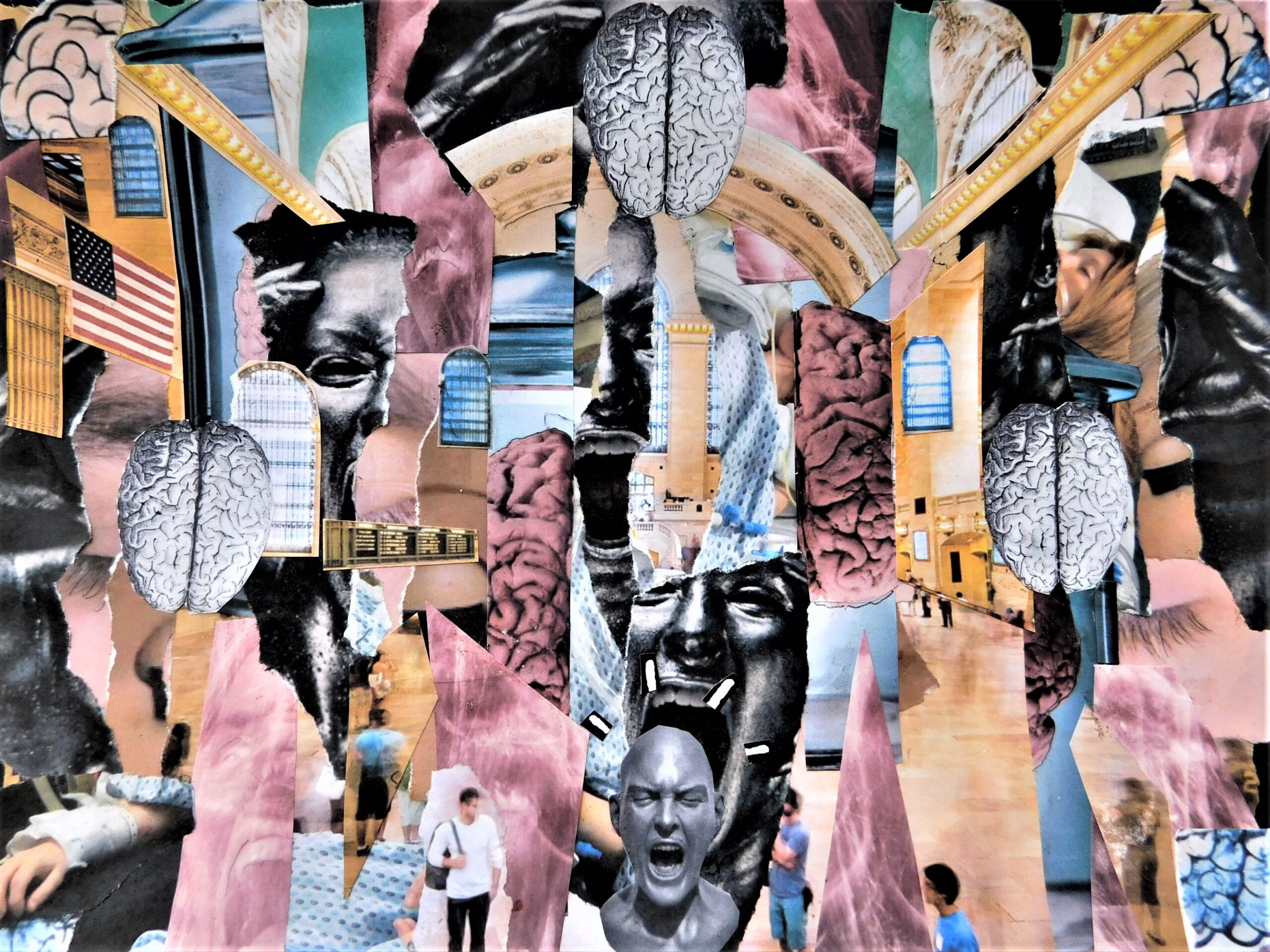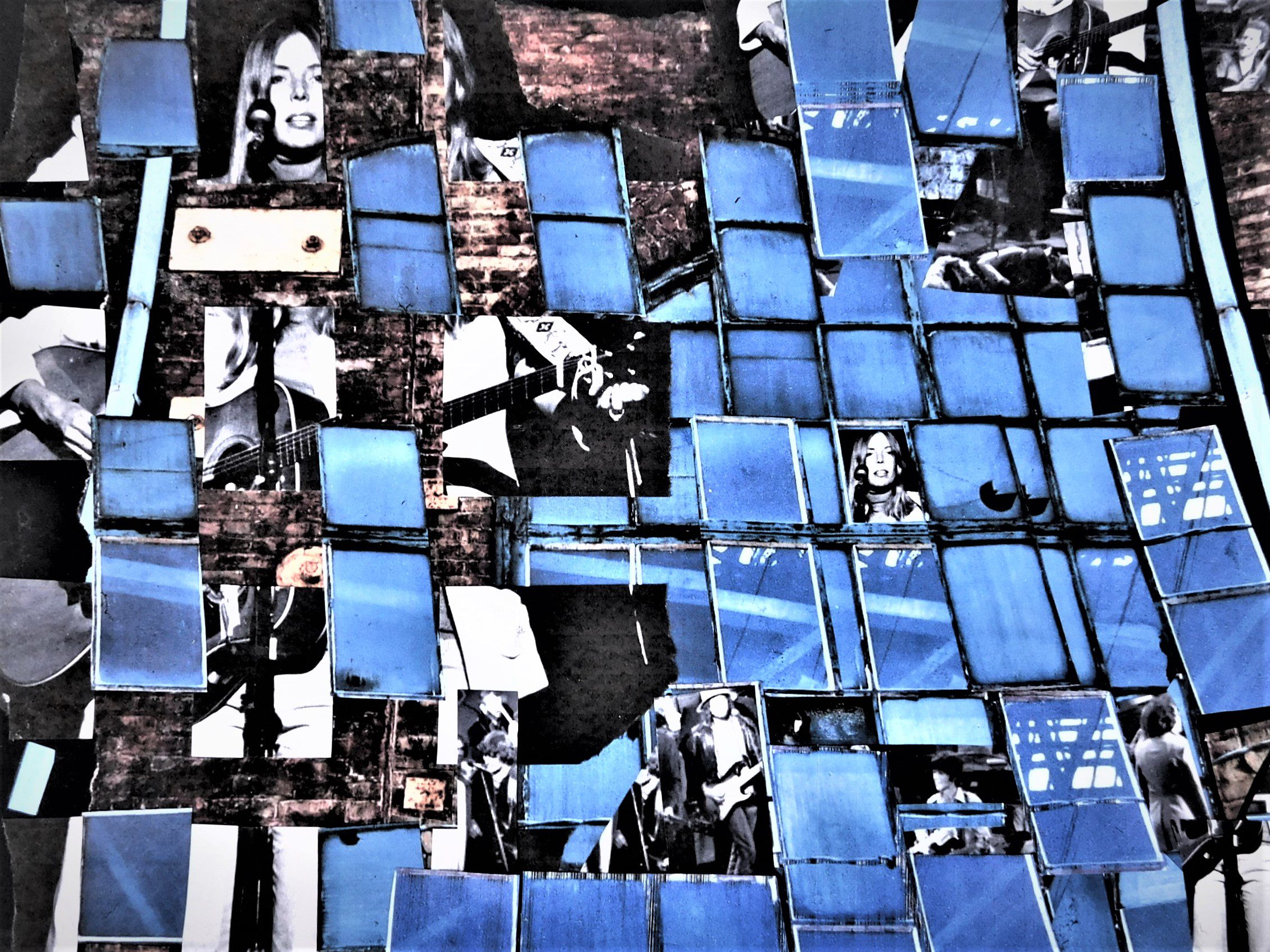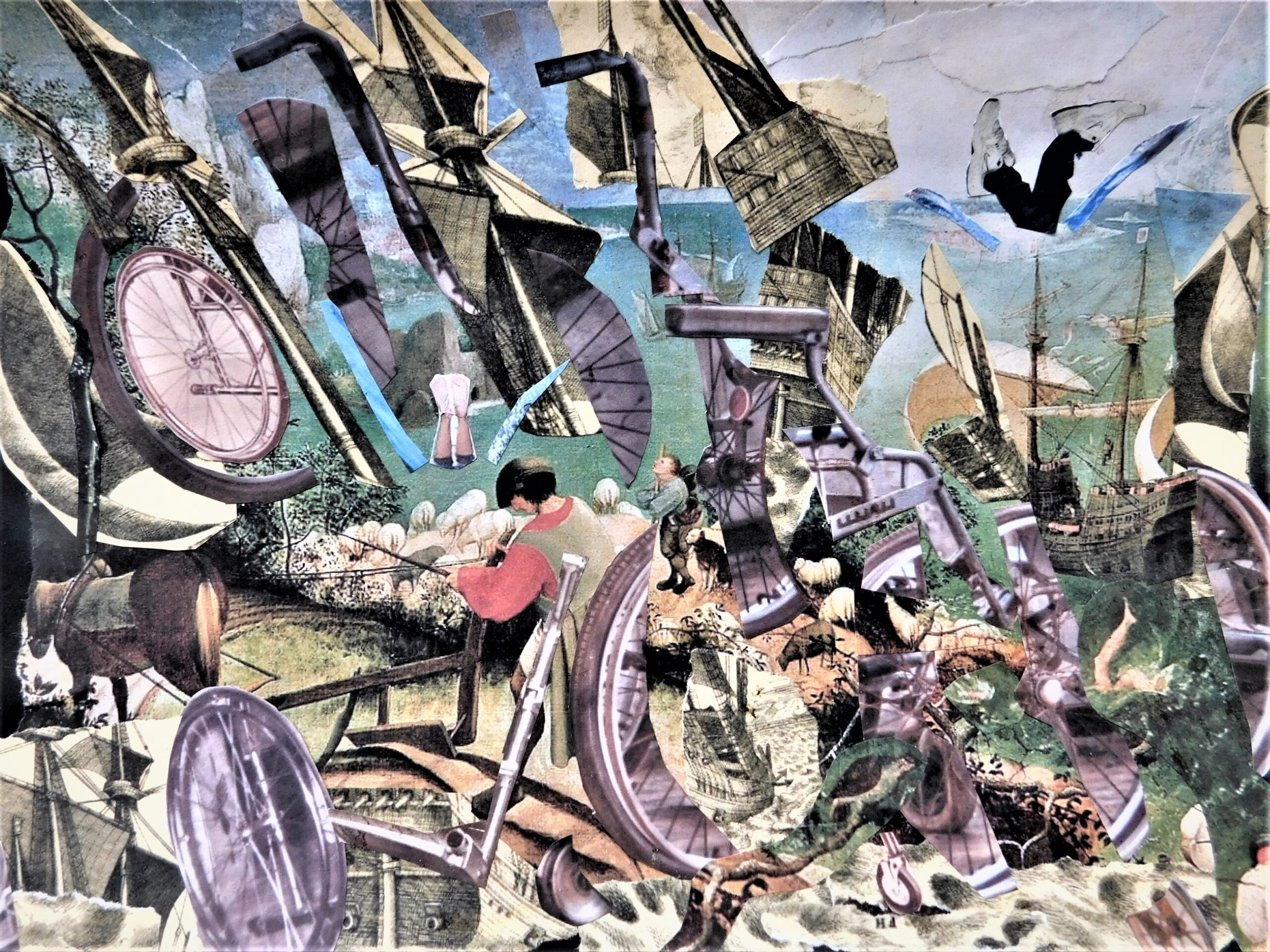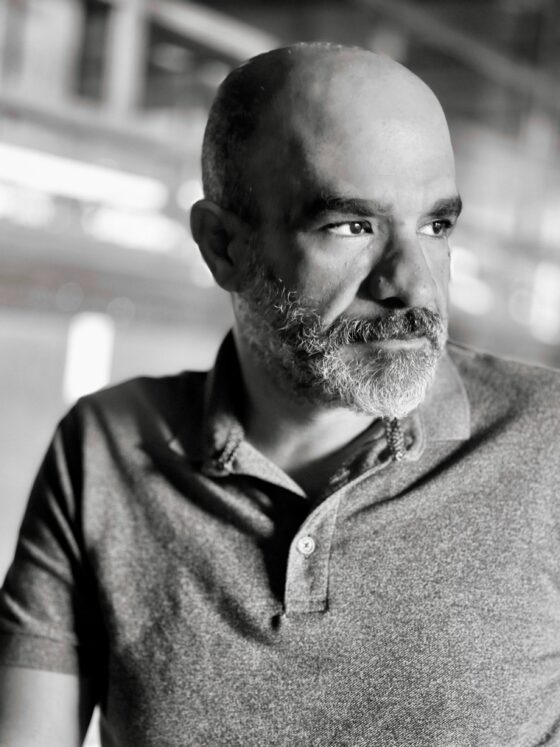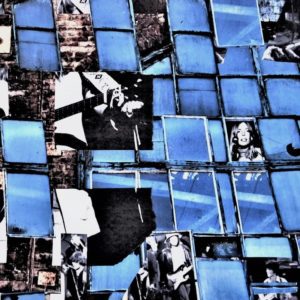
I drank a lot of milkshakes last summer, sometimes two a day. I bought them at the Shake Shack in Grand Central on my way in and out of the city to visit my father at a hospital up north. I bought them when I was hungry and when I wasn’t, when I felt empty and when I felt sick. I drank them not because I wanted them but because I thought I deserved them. My life was horrible and the milkshakes were good and even though those realms of horror and goodness had nothing at all to do with each other, in my mind, at that time, the milkshakes made things, briefly, even.
My father is helpless. On August 1, 2016, he checked into the hospital for an outpatient biopsy. They kept him overnight because his blood pressure was low. On August 2, he went into alcohol withdrawal and became delirious. Then he lost consciousness and had to be intubated. After about three weeks, he woke up, but not really. He no longer knew what year it was, or where he lived, and he’d lost the ability to walk. The doctors told us these things might come back to him, or they might not.
They didn’t.
Fifteen years ago, I was emerging from anesthesia after electro-convulsive treatment (a procedure deemed minor by medical standards, if not by mine) when I realized that I could not open my eyes, nor could I move. I knew I was there, yet I wasn’t, because other than the thought of thought, I had disappeared. Voices murmured over my head while I struggled, nightmare-like, to scream, but frantic nerve impulses went nowhere. Basically, I was a brain in a jar.
The brain in the jar wants out, you know. It just can’t do anything about it.
Seconds later, the world came back, and I was in it, flailing and shouting, or so they told me. According to my doctors, my mind had awakened before my body, creating the effect that, to this day, remains the most terrifying thing that has ever happened to me. It also made me empathetic to the point of hysteria when the same thing seemed to happen to my father.
Technically, my father regained consciousness. He is awake. He is aware of his surroundings, in that he talks to people and eats food and likes to listen to music. He also likes to tell stories about the university where he lives (he doesn’t) and the art he sells (he doesn’t) and the horsemen with swords who stand guard on the roof of the building next door (they don’t, just in case that wasn’t obvious). He chucks the chins of dogs I can’t see. He can’t walk because his hallucinations are so strong that the world is unsafe to stand in. He looks like himself, sounds like himself, but it’s an ersatz self, an off-brand approximation of the person he used to be.
About ten years ago, I became obsessed with the song “Helpless,” in particular, the version performed by Neil Young with The Band at the 1976 concert better known as a film—Martin Scorsese’s The Last Waltz. I was living in New Jersey, teaching in Manhattan, and dating a man who lived in the not-yet-unbearable neighborhood of Williamsburg, Brooklyn. I fled there whenever I could, but sometimes I simply couldn’t stand to get back on New Jersey Transit. So he and I drank in the dingy kitchen of my railroad apartment and watched YouTube videos.
Back then, YouTube was a magical jukebox of video clips you never thought you’d ever see, much less in three-minute morsels, for free; you could stumble across Janis Joplin rocking a kicky, syncopated “Piece of My Heart” on a British variety show, then cackle helplessly at the episode of Fernwood Tonight featuring Tom Waits and his drunk piano. We were not yet inside the solipsistic little media snowglobes we occupy today, and it felt genie-like, to summon up those moments and then be linked to still more moments, algorithm as wish fulfillment. When it got late and I was drunker than I should be, I always wanted to watch “Helpless.”
If you ask a fan of The Last Waltz what they remember most about Neil Young’s performance of “Helpless,” the first response will likely be “coke booger.” Apparently Young performed the song with a chunk of cocaine in his nose big enough to be seen from space. Martin Scorsese hired a special effects team to edit it out, with some success. (I never noticed it.) Strange, that the thing most people remember is something almost nobody saw.
Nobody at the Winterland Ballroom that night saw the thing I remember most about “Helpless,” either, but for a different reason; unlike the coke booger, it was evident only after the fact, in the film. I’m referring of course to Joni Mitchell, tucked behind a curtain, singing near-unearthly harmonies and responses to the visible voices onstage. Robbie Robertson explained to Vanity Fair:
When Neil sang ‘Helpless,’ Joni did a high background vocal that sent shivers through the hall. In the show Joni wasn’t going to perform until after Neil, and I didn’t want to give away her performance before that. I asked Marty (Scorsese) if we could film Joni from behind the curtain while she sang her part… When Joni’s high falsetto came in soaring from the heavens, I looked up, and I saw the people in the audience looking up, too, wondering where it was coming from.
“Falsetto” seems like the wrong word for a singer sounding exactly like herself. Mitchell’s voice and silhouette are immediately recognizable, which makes the decision to hide her even stranger. At the same time, it’s impossible to imagine the relentlessly elegant Mitchell onstage next to three men in varying stages of fucked-up-ness, stumbling through a song with less than a hundred words. They had to start over twice, and even on the second try, Rick Danko (the McDreamy of roots rock) and Robertson jumped the gun on the chorus, five lines too soon. When they did get it together, they camped it up, scanning the ballroom ceiling for the “big birds flying across the sky.” The plaintive gentleness of Young’s voice on the album version is belied in the film by his huge drug-eating grin and the sausage-fest atmosphere.
But Joni never stumbles. Of course she doesn’t. Her voice rises, a blue, blue window framing the man-mess onstage. “Background” is hardly the word for the relationship between her voice and that song. It’s Young’s song and The Band’s stage, but Joni is above and before and around them, invisible, heartbreaking, holy.
In July of 2016, forty years after The Last Waltz and one week before my father had the surgery that sent him to wherever he now thinks he is, I watched another performance of “Helpless.” So few people showed up for the Case Lang Viers show at Prospect Park that I posted on Facebook, asking my friends to come and fill the seats. Some did, and TicketMagic did the rest; the bandshell looked full by the time that unmistakable harmonica melody tugged at me. I was crying before the bass intro was over—which seems kind of crazy now, considering how comparatively little I had to cry about at the time. Hillary Clinton was going to be president, and seeing “Helpless” sung by three very visible, successful women seemed like an apt overture to that new world.
Now, when I pull up the video on YouTube, I have to wait the five required seconds to skip the commercial. The first thing I notice is that K.D. Lang does not sound helpless. She sounds flawless. Like Young, Lang is Canadian; she is also a butch lesbian whose platinum album was called, perhaps ironically, Ingenue. There’s a vulnerability to that word, but it’s hard to hear vulnerability in Lang’s complete mastery of her butter-gold voice. Neko Case and Laura Viers begin the song onstage but in shadow, bathed in blue light, until the spotlit Lang asks them to “sing with me, somehow.” Then the lights come up on all three women, and they sing the chorus together.
It’s a gorgeous rendition, yet I can’t help considering the discrepancy in the size of the crowds—and the esteem—between the women and the men. Nor can I help feeling as if Neko, K.D., and Laura were consoling me preemptively for what had not yet happened: my father’s illness, and way more proof than I wanted that their performance wasn’t a beginning, after all—or at least not the kind I thought it was. I started writing about my father when he got sick, waiting for some event to signal either an improvement or an end. Instead, tragedy—his, ours, America’s—simply became a new and nightmarish daily life.
In the painting we know as “The Fall of Icarus,” Bruegel seems to have caught an epic event in a snapshot from a scenic overlook of his sixteenth-century world. As W.H. Auden demonstrated in “Musée des Beaux Arts,” the failure of the mythic wings is part of the story only if we make it so; if not, those flailing feet are reduced to a Renaissance photobomb. My friend, the writer and teacher Marion Wrenn, points out that “the boy drowns in the margins of the day’s work;” inside the frame, the work continues, and the ship sails on. In its way the painting is more accurate than an essay because it refuses to shape our reading of its evidence. For all we know, the ploughman’s story may be epic, too.
My father, as I knew him, is lost. He seems to remember his previous life, but more likely he just remembers his lines. We play bingo with the ladies at the extended care facility where he now lives, and sometimes he wins, and smiles. He steals cookies from his tablemates and asks for cigarettes; he tells me how whatever work he thinks he did that day is going. I worry that it’s all a performance to comfort me, and that he wakes, like I did once, shackled, inaccessible to himself in some terrifyingly existential way.
“Watch the dog,” he tells me, craning his neck to look behind his wheelchair.
“Okay,” I agree, smiling, but I must look in the wrong direction, because his own smile fades.
“You don’t see it?”
“Not right now.” It’s not a lie, I guess.
“It was right there,” he insists, and looks again, uneasy.
“It’s okay, Dad.” I touch his shoulder, turn him gently back to the snack in front of him on the table. “It would be nice if there was a dog here.”
When I was hospitalized with severe depression, my father visited regularly. His businesslike approach to my illness both irritated and comforted me. He didn’t see the world the way I did, but the one he lived in was far safer than mine. He believed in stable space, logical time; I believed that my own mind could consume me, that a thought or a dream might take me somewhere from which I’d never find my way back. I knew that place existed, because I was living with people who’d already crossed over, and there were days I wasn’t sure which side I was on.
My dad brought the flat minutiae of regular life—dates, places, rolls of quarters—with him, and shared them with me. When I was released from the hospital, he drove over an hour from home at the crack of dawn to take me for outpatient ECT treatments, which was not a favor I could ask of anyone else in my life, right then. Afterwards, he’d take me to grab coffee and a scone at the café in the center of my university town. I hoped hard that I wouldn’t run into anyone I knew, but I was also desperate to feel normal. I stood in line with people breathless and gleaming from exercise, dour on their way to work, or chatting happily with friends. When I got back in the car, he gently unstuck my hair from the traces of adhesive at my temples, where the electrodes had been, just an hour before.
In a darkly comic sort of way, Donald Trump’s presidency makes perfect sense in my father’s current state. It’s just the sort of bizarre mental leap my father makes, merging places, times, and people from his past and his present, mundane facts with monstrous details. The white-haired lady across the room is his long-dead mother; the romance novels on the day room shelf are his college philosophy books; when I stop by, he tells me he’s just returned from the gym he last visited over a year ago. I have gotten used to the unpredictable synthesis of humor and horror in our conversations, but it makes me nervous to be unable to see where we’re heading, to envision a satisfying ending in which I will learn anything I want to know.
I still have the same brain that broke fifteen years ago, and my life still shows those seams and cracks, not all of which were mended. I’m still not sure what set it off. Events that some days seem like causes, on others read like effects, and one of the problems with writing about my own mental health is figuring out where to start. In our age of medication, we have surrendered the narrative structure that Freud’s understanding of neurosis required. Freud believed that to find the story, tell it, and understand it was a kind of cure. Back when all I had was therapy, I could not figure out why telling my story again and again, examining it, even understanding it, did not make me better. I just got worse. I did terrible things I had read about in books and was unable to see them for what they were, because I thought I was in a different novel entirely. A marginal but useful definition of insanity is not knowing what genre of book you are in; depression is knowing, but being helpless to change it.
And it could happen again. So, it seems, could a lot of things that we thought had ended.
In Young’s song, “the chains are locked and tied across the door,” but it’s not clear if we’re trying to get in, or to escape. And in terms of being seen, it is not necessarily better to be Lang in 2016 than it was to be Joni in 1976. (The most popular video of Case Lang Viers’ performance has 47K views; the top clip from The Last Waltz, 3 million.) After all, looked at from another angle, Joni isn’t hidden. Let’s face it, she’s in the goddamn Last Waltz, and one could argue—though I won’t—that her seat in the shadows just makes her more memorable, more real.
My father and I lost our minds. I found mine (for now, at least); he didn’t, and at this point, I don’t think he will. I could end this essay by saying that I stopped drinking milkshakes, possibly forever, because I came to terms with his condition, or because I finally realized that I’d mistaken metaphor for sustenance. It doesn’t matter. Writing has helped me save myself, for now, but it won’t save my father. I don’t think he’s suffering, but then he doesn’t know what’s gone. It’s as if his life stopped moving forward and opened up, Bruegel-like, and we see all his selves through time at once, frozen in their moments.
I also see—somehow for the first time—how few existing frames really have room for all of us. Not every loss will be seen or mourned, and little of what happens in the wings will end up iconic, immortal, in oil or essays or on film. All we can do is make our perspectives as wide as possible, so we can see who is falling, and try to save them.
***
Rumpus original art by David Dodd Lee.

